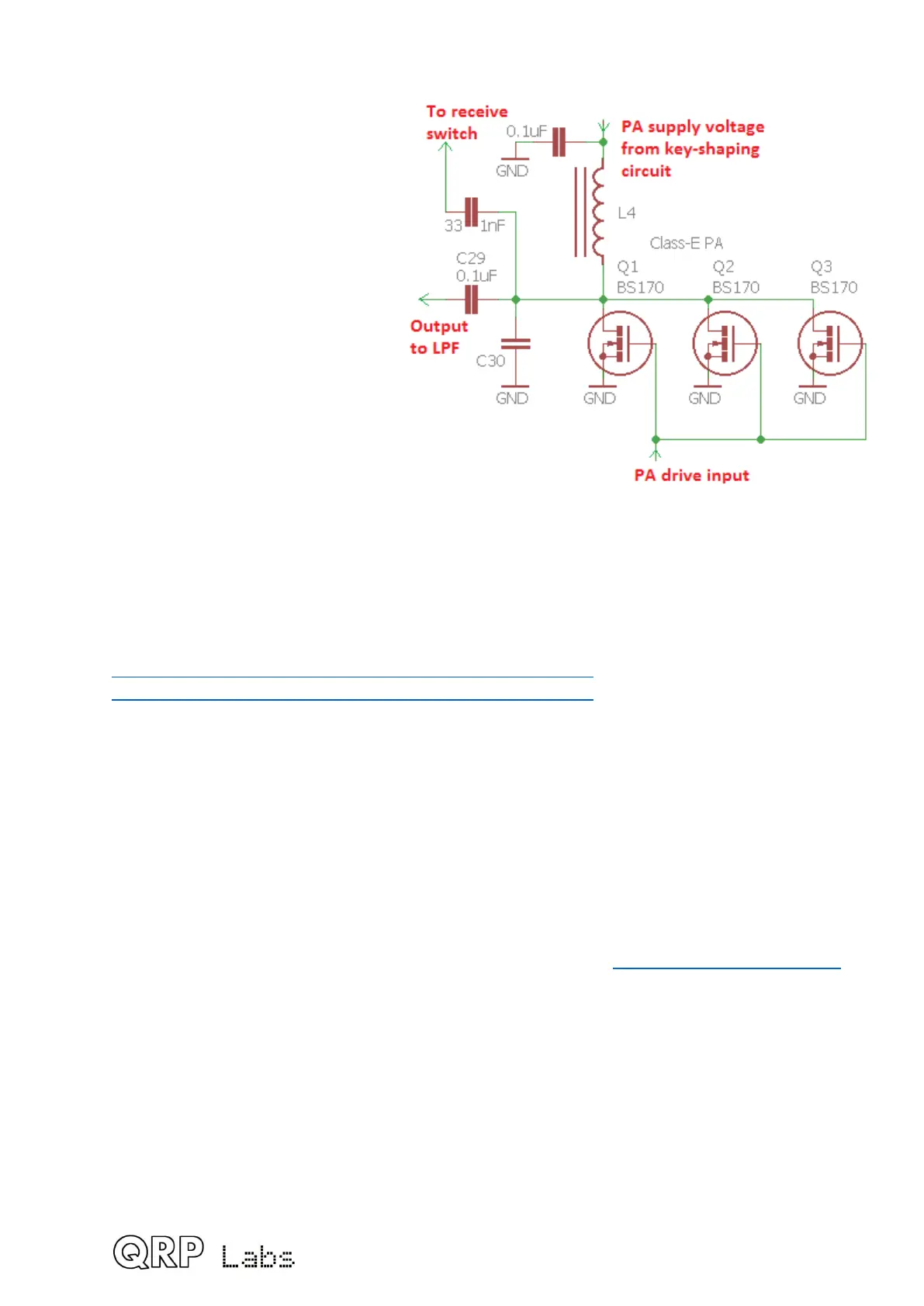frequency to the LCD. There is a burst of activity in the microcontroller, and on the digital
control signals to both the Si5351A and the LCD. The LCD controller chip will also be doing
some work to effect the changed display. All of these digital transitions can radiate noise
into the receiver front end. Changes in power consumption cause noise on the supply lines
which can also be converted into noise detected in the receiver front end.
To combat the radiation issue, the ATmega328P microcontroller is sited away from the RF
and audio signal paths, right at the front of the PCB so that the connections between the
processor and LCD module and the microcontroller are kept as short as possible, to
minimize radiated noise.
To keep noise out of the supply, the 5V supply to the microcontroller and LCD module is
filtered by 47uH inductor L6 and 470uF capacitor C47.
In combination, these measures ensure that there are no “clicks” in the audio when tuning
the receiver; just a small “flutter” as I call it, which is a natural consequence of the sudden
change in frequency (Fourier rules).
Liquid Crystal Display module
The transceiver uses an HD44780-compatible LCD
Module with 16 characters by 2 rows. The LCD is
operated in the 4-bit mode in order to minimize the
I/O pins used. No data is read back from the LCD
which means the Read/Write pin can be grounded.
In total only 6 I/O pins are used for writing to the
LCD.
The LCD is mounted on the front panel PCB and
the circuit section (right) is a part of the front panel
PCB.
The usual contrast adjustment trimmer
potentiometer is R47 and must be set to obtain a
readable display.
The LCD back-light consumes about 30 or 35mA of
current. The back-light could be connected directly
to the 5V supply but this would somewhat increase
the power dissipation of the 7805 regulator. In order to avoid overheating the regulator, this
back-light is powered instead directly from the +12V rail via R48, a 270-ohm resistor. This
resistor value was chosen so that over a supply voltage range of 7 to 20V the back-light
brightness still appears reasonable. If you want a reduced brightness display, you could
increase the value of R48.
Sidetone
In the early firmware versions of this transceiver, the sidetone was generated by Pulse
Width Modulation using the ATmega328’s Timer1 peripheral. The frequency and volume of
the sidetone were configurable in the software via the configuration menu. In order to
control the volume, the microcontroller adjusted the duty cycle from 50% (maximum
volume) down to under 1% (for minimum volume).
93
